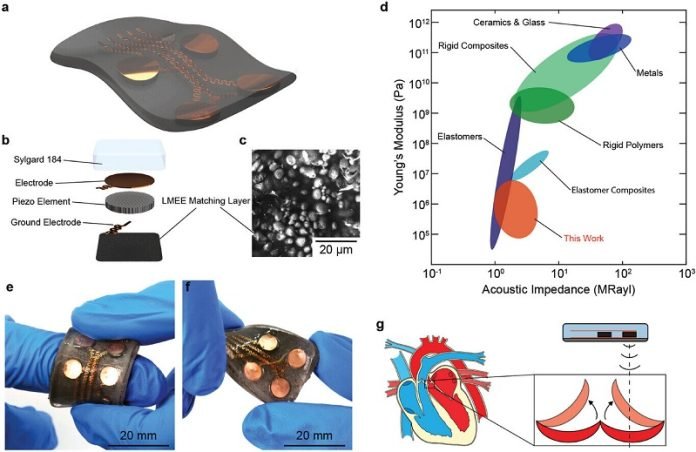
Ultrasound technology is something many of us know about, especially when it comes to seeing images of babies growing inside the womb. But ultrasound does so much more in the medical world.
It can check how blood flows in our bodies, look closely at lumps that doctors are concerned about, and help diagnose various diseases.
With its wide range of uses, scientists have been working on creating wearable ultrasound devices.
Imagine wearing a device that can keep an eye on your heart or blood flow all the time, alerting you if something goes wrong.
However, creating these wearable devices hasn’t been easy. The main challenge lies in how ultrasound works.
It uses special devices called transducers to send out and receive sound waves. These waves bounce off different parts of our bodies to create images or data.
But for the sound waves to move smoothly from the device to the skin and back, they need help. This help comes in the form of “matching layers” that make sure the sound waves can travel well between the device and our skin.
The problem is that most materials used for these matching layers are too stiff. They don’t work well for devices meant to be worn and move with our bodies.
This is where researchers from Nebraska, led by Eric Markvicka and Ethan Krings, have made an exciting breakthrough.
They’ve turned to liquid metal droplets, specifically those made from gallium-based alloys, which are metals that can stay liquid at room temperature.
By mixing these droplets into a soft silicone material, they’ve created a new kind of matching layer that’s both stretchy and effective.
In their experiments, they found that adding about 70% of these liquid metal droplets to silicone made the matching layer work nearly as well as the stiffer materials.
Even when stretched—like it would be when worn—the layer only lost a tiny bit of its effectiveness. This is great news for making ultrasound technology wearable.
The team has already built a prototype of a wearable ultrasound device using this new matching layer. In tests, it could detect movement that mimicked the human heart or other body tissues, showing its potential to monitor health conditions in real time.
Their research, published in the journal Advanced Functional Materials, suggests that tweaking these liquid metal droplets further could make these wearable devices even better.
As we move towards a future with wearable medical devices, this innovative matching layer could be a game-changer, making it easier to keep an eye on various health conditions and diseases.
With such advancements, the dream of having wearable technology that continuously monitors our health, especially heart and blood flow, is becoming more of a reality.
This could mean a big leap forward in how we take care of our health, offering peace of mind and potentially saving lives by catching problems early.



